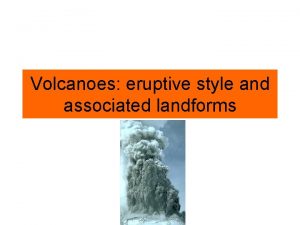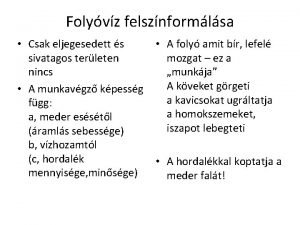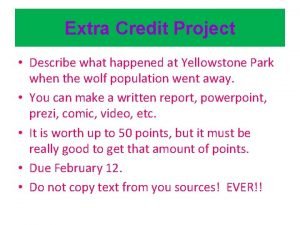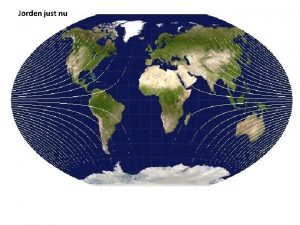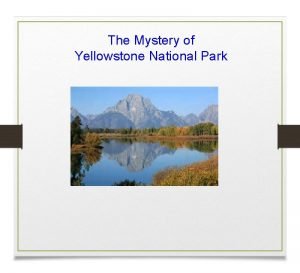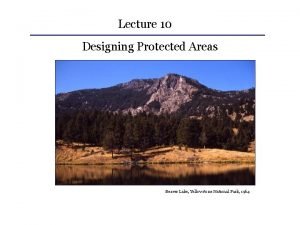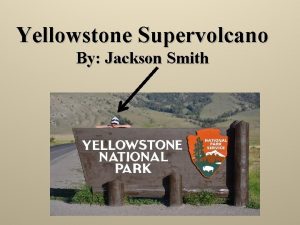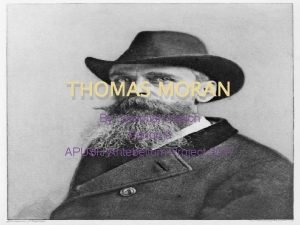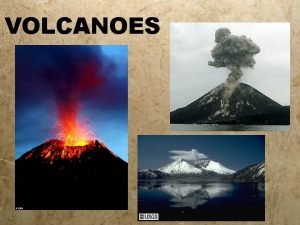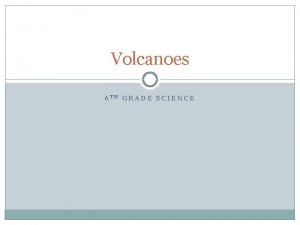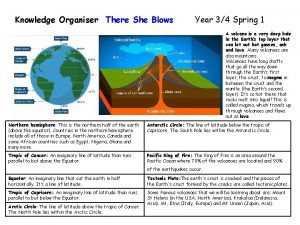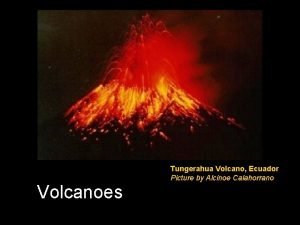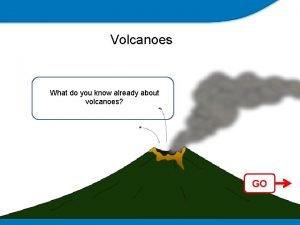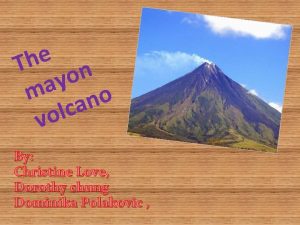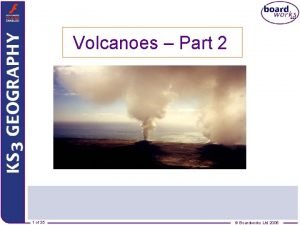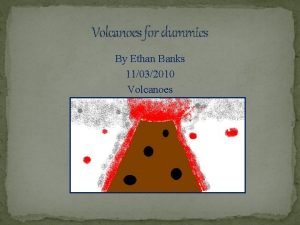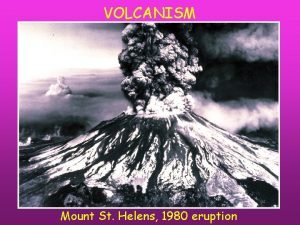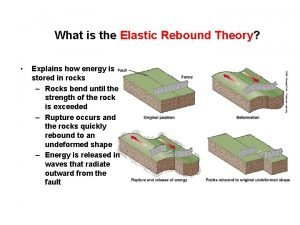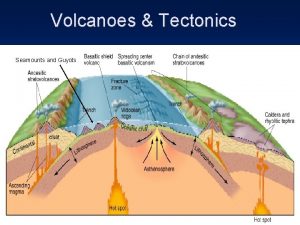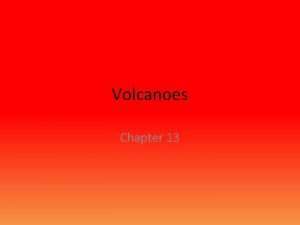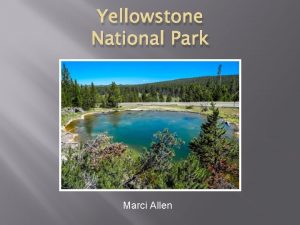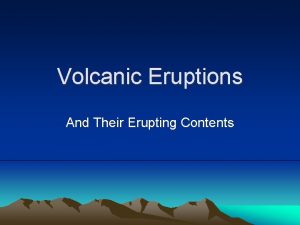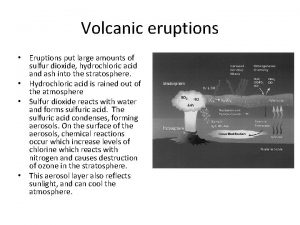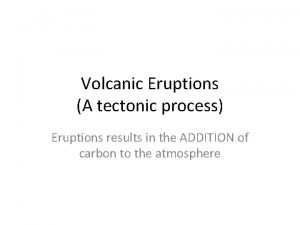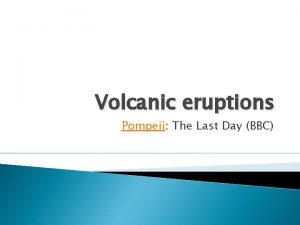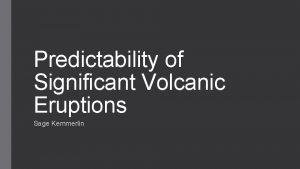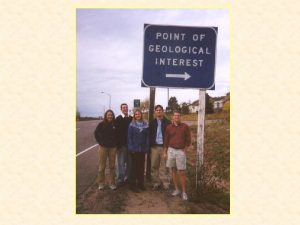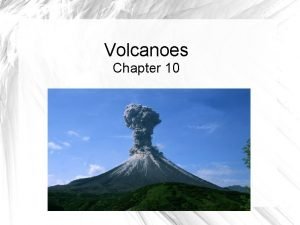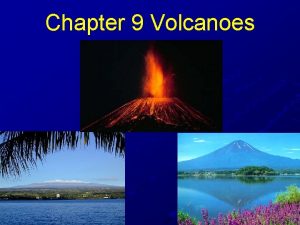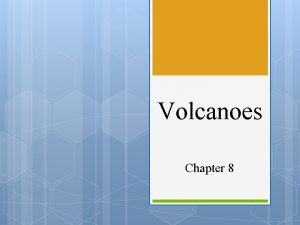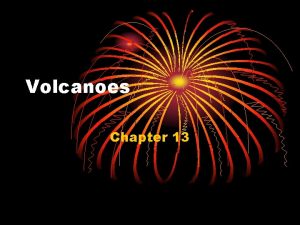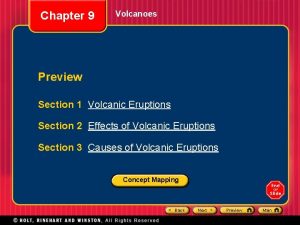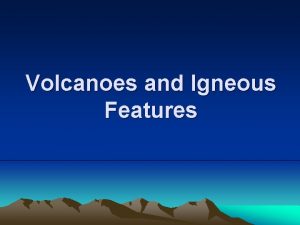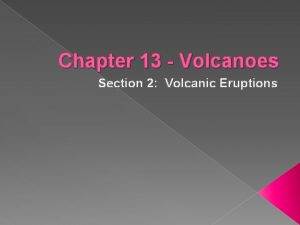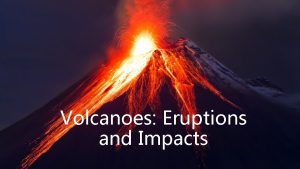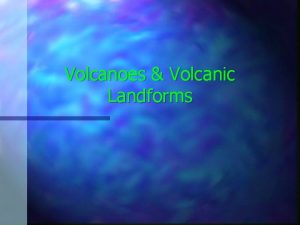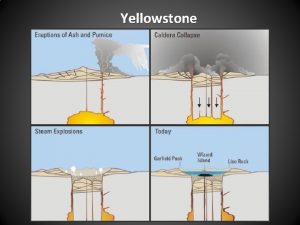Volcanoes Super Volcanoes Eruptions of the Yellowstone volcanic
































- Slides: 32

Volcanoes

Super Volcanoes

Eruptions of the Yellowstone volcanic system have included the two largest volcanic eruptions in North America in the past few million years; the third largest was at Long Valley in California and produced the Bishop ash bed. The biggest of the Yellowstone eruptions occurred 2. 1 million years ago, depositing the Huckleberry Ridge ash bed. These eruptions left behind huge volcanic depressions called “calderas” and spread volcanic ash over large parts of North America (see map). If another large caldera-forming eruption were to occur at Yellowstone, its effects would be worldwide. Thick ash deposits would bury vast areas of the United States, and injection of huge volumes of volcanic gases into the atmosphere could drastically affect global climate.




Volcanoes n Opening in Earth’s surface ¨ n Forms mountain when layers of lava and volcanic ash erupt and build up. 3 places Divergent plate boundaries ¨ Convergent plate boundaries ¨ Hot spots ¨

Magma n n Molten rock beneath earths surface Viscosity - resistance of a liquid to flow ¨ Higher the viscosity the slower it flows § Ex. Oil 10 W 30, syrup ¨ Lower the viscosity the faster it flows § Water, pop ¨ Viscosity depends on the Silica content and the temperature n Silica is made up of oxygen and silicon

n n More silica higher its viscosity Produces light colored lava ex. rock rhyolite Less silica lower the viscosity Produces dark colored lava ex. basalt

Lava n n Magma that reaches the surface. 2 types of Land Lava 1. Pahoehoe – fast moving, hot lava, low viscosity § Smooth, hardens into ripples

1. Aa Lava – cooler and slower moving Sharp/jagged surface

q. Pillow Lava § smooth lumps § occurs underwater

Types of Volcanoes n 3 major types ¨ Shield ¨ Cinder-cone ¨ Composite n 2 factors ¨ type of material that forms the volcano ¨ type of eruptions that occur ¨ Types of Volcanoes (Video)

Shield Volcanoes n Mountain with broad, gently sloping sides and a nearly circular base. Form when layer upon layer of lava accumulates during nonexplosive eruptions ¨ Largest of all the types ¨ The Hawaiian Islands ¨

Sheild

Shield Volcano

Mauna Loa, Hawaii

Cinder-Cone Volcanoes n Material ejected high into the air falls back down to Earth and piles up around the vent Steep sides ¨ Generally small ¨ n ¨ most are less than 500 m. Izalco volcano in El-Salvador

Cinder Cone

Izalco

Composite Volcanoes n Layers of volcanic fragments alternate with lava Larger than cinder-cone volcanoes ¨ Mount Saint Helen and Mount Rainier ¨ n found in the northwestern U. S

Composite

Anatomy of a Volcano n Vent ¨ n Crater ¨ n Where magma becomes lava Runs from mantle to magma chamber Magma chamber ¨ Holds n magma Dike ¨ Side shoot of magma flow that breaches surface Bowl shaped depression Conduit ¨ n n Sill ¨ Side shoot of magma flow that does not breach surface



Pyroclastic flow – a flow of hot gas, ash, and rock that moves down the side of the volcano. n n n Flow down a slope at incredible speeds. travel at speeds of nearly 200 km/h may contain hot, poisonous gases VIDEO

What determines the magnitude of the eruptions? Quiet Eruptions – low in silica, flows easily Ex. Hawaii ¨ Explosive Eruptions – high in silica, thick and sticky. n Magma build up in the volcano’s pipe plugging it like a pipe. Ex. Mt. St Helens ¨ Before After

Tephra – air debris from a volcanic explosion Ash Lapilli Bomb Blocks

Calderas n n Large, crater shaped basin Formed by volcano top collapsing ¨ Crater Lake, Oregon

Pyroclastic flow 15 seconds 40 seconds 30 seconds 60 seconds 5 minutes

Landforms from Volcanoes Volcanic Neck

Dikes
 Superworm is super long
Superworm is super long Lava dome
Lava dome Miś z fikcyjnego parku narodowego jellystone
Miś z fikcyjnego parku narodowego jellystone Feltöltő szakaszjelleg
Feltöltő szakaszjelleg Yellowstone park food web
Yellowstone park food web Yellowstone national park surveyed a random sample of 1526
Yellowstone national park surveyed a random sample of 1526 Yellowstone national park is mainly located in wyoming
Yellowstone national park is mainly located in wyoming Food web of yellowstone national park
Food web of yellowstone national park Yellowstone vulkan
Yellowstone vulkan Food webs and energy pyramids answer key
Food webs and energy pyramids answer key Ytbergarter
Ytbergarter Mystery in yellowstone
Mystery in yellowstone Beaver lake yellowstone
Beaver lake yellowstone Yellowstone magma chamber
Yellowstone magma chamber Jeremiah welch
Jeremiah welch Yellowstone sinopsis
Yellowstone sinopsis Fall river electric
Fall river electric Extreme earth
Extreme earth Volcanoes of italy map
Volcanoes of italy map Ring of fire volcanoes
Ring of fire volcanoes Lithosphere definition
Lithosphere definition How are volcanoes classified
How are volcanoes classified Name volcanoes
Name volcanoes Volcanoes knowledge organiser
Volcanoes knowledge organiser Active volcanoes map
Active volcanoes map What do you already know about volcanoes
What do you already know about volcanoes Differentiate active and inactive volcanoes
Differentiate active and inactive volcanoes Magma chamber
Magma chamber Chapter 8 earthquakes and volcanoes
Chapter 8 earthquakes and volcanoes Volcanoes for dummies
Volcanoes for dummies Where are volcanoes
Where are volcanoes Elastic rebound theory definition
Elastic rebound theory definition Guyots
Guyots

